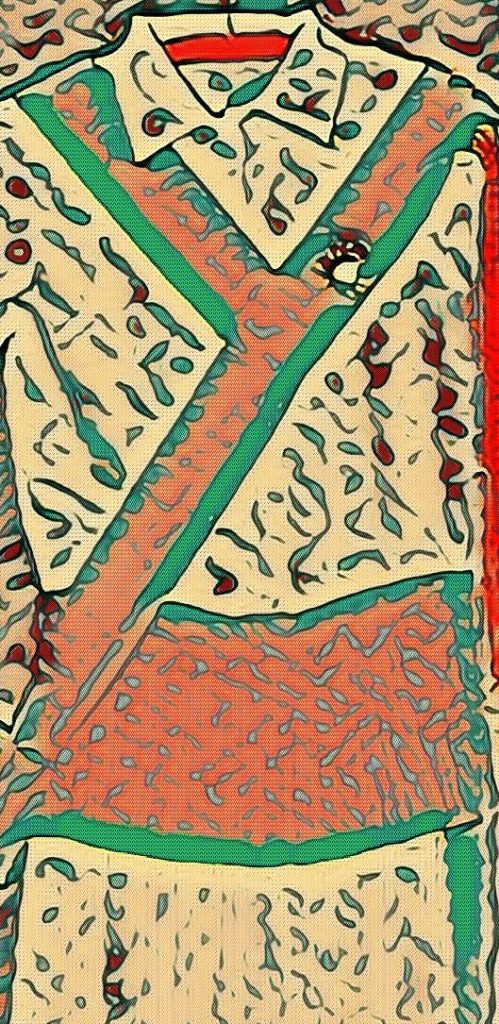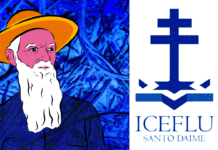- How Indigenous & Black People are Fighting Colonialism in the Academy - September 2, 2020
- How Feminine is Ayahuasca? - November 21, 2016
- My Experience as a Brazilian at a Santo Daime Retreat in the United States - October 16, 2017
In August of this year, a bomb exploded in the world of New Age practitioners: The Brazilian guru, Prem Baba, a charismatic religious leader who propelled a New Age movement with a worldwide following, was accused of sexual abuse by two women who for years had been a part of his closest circle of adepts. Janderson Fernandes (Prem Baba’s birth name) was exposed by his victims to a major Brazilian news source, the Época Magazine, as having used his charismatic leadership to rope them into a series of sexual activities, which he called a special kind of “tantric treatment,” performed throughout by him and each woman “consensually.”
Prem Baba publicly recognized his “mistakes,” minimizing them as “part of his learning path,” and characterizing the denunciation as a kind of “dark force growing in the hearts of his people.”
One of the women opened up after finding herself experiencing serious panic attacks. After the news bomb hit, Prem Baba publicly recognized his “mistakes,” minimizing them as “part of his learning path,” and characterizing the denunciation as a kind of “dark force growing in the hearts of his people.” The women’s accusations were depicted on a YouTube post by Janderson as a flaw of their spirituality, rooted in inexplicable greed and pain. Afterwards, many of his closest followers publicly rejected his version of events and stood up for the two women, sparking a massive exodus from his movement.

Ayahuasca Circles in Brazil
In Brazil, legal regulations determine that one can engage in an ayahuasca experience only in religious settings, of which there are three main ones: indigenous traditions, the “ayahuasca religions” (Santo Daime, União do Vegetal, and Barquinha), and the increasingly popular neo-ayahuasquero centers. Most people drink ayahuasca within the religious ayahuasca groups.
The ayahuasca churches have been present in Brazil since the 1930s. They combine diverse cultural influences, such as indigenous, European, and African-Brazilian through the framework of popular Latin American Christianity. Neo-ayahuasquero centers are characterized by the more fluid and less institutionalized use of ayahuasca and New Age religiosity. Janderson Fernandes began his career as a spiritual leader in one of these nuclei when, as a psychotherapist, he started sharing ayahuasca with his followers.
These non-indigenous ayahuasca circles in Brazil are demographically predominantly middle-class, white people of often surprisingly conservative views. In an elitist and conservative exception to the popular paradigm of the psychedelic revolution, the religious and therapeutic experience of ayahuasca in urban contexts is available mainly for those who can afford or have access to it.
describing how the family is the unit of society and homosexuals were out of the correct order of things.
An example of this is the alignment of some UDV leaders with the reactionary campaign of the recently elected presidential candidate, Jair Bolsonaro, who harbors extreme right-wing views. In September of this year, the ex-general leader of UDV in Brazil, Raimundo Monteiro de Souza, recorded a WhatsApp audio calling for followers to support the fascist candidate and stop a supposed “moral crisis” pervading the country. This did not come as a surprise, as the UDV had in the past expressed reactionary views on multiple fronts. One clear example is an internal UDV statement, which was later leaked on the internet, describing how the family is the unit of society and homosexuals were out of the correct order of things. Also, it is important to remember that, within this group, women cannot reach the top of the hierarchy as masters, a position restricted to men; a rule that has been rarely defied.
Alarm Signals
As ayahuasca grew more widely popular in Brazil, cases of sexual assault and misconduct toward female participants in ritual settings began to emerge. The exact number of cases is unknown, since many of them don’t come to light. Fortunately, this issue is increasingly illuminated by participants, academics, and activists in a growing international movement that denounces practices previously silenced within ayahuasca circles.
In this article, we want to bring out the strategic relevance of a gendered perspective on religious groups in contemporary contexts, making visible the scenarios that make possible abuses of all kinds, especially those of a sexual nature.

Tools for Analysis
The complexity of abuse and, specifically, of sexual assault in religious circles has been studied under a number of perspectives,1 2 but is certainly more complex in cases where a psychoactive substance is included at the core of the religious practice. Such is the case in the evaluation of sexual assault cases in the ayahuasca religious context: What is to blame for the violations: the psychoactive plants or the sexist hierarchies prevalent in those contexts?
Sexual abuse in ayahuasca circles is a very delicate matter that involves, first, a critical reflection about consent and autonomy in the context of hierarchical relationships and, second, thoughts about the influence of ayahuasca in this dynamic.
Sexual abuse in ayahuasca circles is a very delicate matter that involves, first, a critical reflection about consent and autonomy in the context of hierarchical relationships and, second, thoughts about the influence of ayahuasca in this dynamic. There is a tension between the human rights of collectives, such as the ayahuasca religious groups, and the human rights of individual subjects, particularly those of women, LGBT people, disabled people, and others in situations of social vulnerability respective to their perpetrator.
Our proposal is that, in Brazil, some religious groups are based in a hierarchical and sexist structure in which women are “essentially” different from men.
Our proposal is that, in Brazil, some religious groups are based in a hierarchical and sexist structure in which women are “essentially” different from men. This affects women and LGBT people in different ways. There are some ayahuasca religious institutions and neo-ayahuasquero groups in Brazil that tend to perpetuate this difference regarding their choice of leaders, the configuration of rituals, and the establishment of genealogies of their divine masters.
Following cosmologies and specific liturgies, it is common among some ayahuasca religious institutions to find a strong sense of hierarchy that empowers commanders. (Of course, there is much variation between different churches and organizations and we are using generalizations here for the sake of our argument.)
By presenting their leadership as destined to a spiritual mission, religious authorities often make it difficult for their words and actions to be questioned by followers.
By presenting their leadership as destined to a spiritual mission, religious authorities often make it difficult for their words and actions to be questioned by followers. Also, the divisions between men and women are strongly based on traditional Brazilian gender roles. Often, men are defined as active rulers and women are portrayed as docile and natural followers.
In some neo-ayahuasquero groups, even though they generally seek to differentiate themselves from institutionalized religions, and embrace a more fluid structure, a good number of leaders also tend to assume hierarchical positions.
This situation inside these religious communities risks growing more rigid in the face of the rising political wave of fascism, as epitomized in the recent election of far-right candidate Jair Bolsonaro to the Brazilian presidency. Between this rigid internal sexist hierarchy and an increasingly conservative and hostile political environment, we anticipate the growth of sexual assault and other abuses within ayahuasca groups in Brazil.
The Brazilian State favors freedom of expression and inner organization within the ayahuasca religions. But, like any organization subject to legal scrutiny, its principles should not compromise human dignity; and, despite the importance of thinking the human rights of collectivities, the dimension of the individual remains fundamental.
Human dignity and human autonomy are values that should be translated into dignity and autonomy for every subject. No religion should impose a perspective obliterating the fundamental human rights of its participants. In the case of women, LGBTs, and other groups in similar situations of vulnerability, this attention should be redoubled.

Proposals
To recognize, reflect about, and change this reality, we propose a few actions towards the politicization of ayahuasca circles in Brazil. First, we support questioning the cultural autonomy of practices that take place in ayahuasca religious rituals, intertwining those experiences with gender, race, ethnicity, class and other concepts that are sensitive to social differences within settings. In this sense, we argue that abuse is not linked to a unique practice, but to many. For instance, racism and classism might manifest alongside the expression of sexual abuse at times.
On a more concrete basis, we call for the production of materials discussing assault and consent to ayahuasca groups worldwide, highlighting what is and is not a healing practice in a pre-post-ritual context. We support the production and sharing of such resources between heterosexual women, bisexual, gay, and trans people attending ayahuasca rituals in religious contexts as a means to prevention. We also recommend the creation of a headquarters for receiving complaints, offering a space to listen and to assess experiences of abuse in these contexts as a means of treatment, as well as multiplying platforms for complaint and redress that are accessible to civil society.
And last, but not least, we wish to highlight the importance of linking ayahuasca’s role as a companion plant to social and community development in local, integral, holistic ways to our unfolding story as species who met, built together practices with a purpose, and helped remake society in this era of the Anthropocene.
References
- Keenan, M. (2011). Child sexual abuse and the Catholic Church. New York: Oxford University Press. ↩
- Bottoms, B. L., Goodman, G. S., Tolou-Shams, M., Diviak, K. R., & Shaver, P. R. (2015). Religion-related child maltreatment: A profile of cases encountered by legal and social service agencies. Behavioral Sciences and the Law, 33, 561–579 ↩
Take a minute to browse our stock:
Did you enjoy reading this article?
Please support Chacruna's work by donating to us. We are an independent organization and we offer free education and advocacy for psychedelic plant medicines. We are a team of dedicated volunteers!
Can you help Chacruna advance cultural understanding around these substances?














